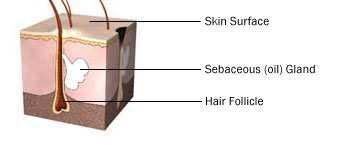Eczema
Eczema
The rebound of eczema symptoms after ceasing topical steroids can be very distressing as well as difficult for doctors, patients and carers to manage.
In my experience, wheatgrass can make this so much easier to prevent and control in the majority of patients. I believe this is due to the immune stimulant effect of wheatgrass which helps the skin recover naturally.
The method is quite simple.
First, aim to reduce the steroids gradually over a period of time – say two to three weeks. For the first week, start to boost the skin’s immunity by applying wheatgrass two to three times daily, but in combination with the topical steroid. Wheatgrass first, steroid on top. Use either the wheatgrass extract in a cream base or as a lotion. Because a simple lotion contains fewer ingredients than cream formulations, it is my preferred treatment for eczema in infants and children.
In the second week, try to reduce the steroid by 50 percent either on a daily basis, or every second day.
By the third week it may be safe to reduce the steroid to twice weekly, then once weekly, then cease. In this way, you will build up the skin’s immunity quite significantly so that the steroid may no longer be required provided the wheatgrass continues to be applied once or twice daily.
In the event of flares, which often happen in the first few months but are usually milder than before, repeat the steroid/wheatgrass combination. However, this time, reduce the starting dose of topical steroid, then continue with the reduction schedule as before. It is quite possible this period will be significanly shorter than the first ‘cycle’.
I have helped numerous patients, adults and children, towards far better quality skin this way, most of whom have been able to dispense completely with their steroids. Others only need to use the steroids to help them over a flare from time to time, but only for days rather than weeks or months. It is also worth noting that many eczema patients improve if wheatgrass is given orallly (Supershots) in addition to the topical formulations.
In the more severe cases, I use daily wheatgrass application in combination with oral steroids i.e. prednisolone, usually 20mg. daily to begin with, to get control over the eczema by reducing inflammation and itch. I then reduce the prednisolone by small increments of 2.5mg every three or four days as this helps significantly in reducing rebound. The aim is to cease the oral steroids as soon as possible, but to maintain the wheatgrass application. If rebound occurs, I repeat the steroid cycle, but never return to the original dose. Usually, if the patient has commenced on 20mg. prednisolone, I return to 15mg. then repeat the gradual reduction in dosage.
This process may take three to six months, but the outcome is usually successful so that only the wheatgrass topical is required.
Eczema Flare and Dry Skin Prevention Techniques
No eczema treatment, including wheatgrass and topical (or oral) steroids, is likely to work unless simple, ‘damage control’ measures are also taken. Try to assist your immune system to heal your skin naturally by reducing or eliminating exposure to adverse factors such as soap, hot water and frequent shampooing which dry the skin, aggravate the condition and slow recovery. My rules:
AVOID SOAP –
of any kind. This includes soap-containing shampoos, dishwashing detergents and so on. Try to find a colloidal oatmeal containing soap-free wash for body and face and a shampoo containing the same ingredient. Oatmeal appears to have a similar immune-boosting action as wheatgrass and the two appear to work synergistically.
In Australia, the only colloidal oatmeal containing product I am aware of is the ‘Dermaveen’ brand, available at pharmacies. In the USA it is called ‘Aveno’, but I believe there is an equally good but lower priced product available at WalMart stores under the ‘Equate’ brand.
REDUCE EXPOSURE TO HOT WATER
in other words, take short (5 minutes max) showers and NO BATHS. Soap and hot water combine to remove sebum from the pores of the skin and deep into the sebaceous glands, inhibiting sebum production causing dryness and itchiness. Sebaceous glands (See Figure) are controlled by hormones and the immune system, which wheatgrass appears to strengthen naturally.

APPLY WHEATGRASS AS A CREAM OR LOTION AT LEAST TWICE A DAY.
More often if necessary. As well as strengthening the skin’s immunity, biological actives from the wheatgrass are absorbed into the body and in time, the patient’s immune status becomes stronger – a major bonus. I also recommend taking wheatgrass orally to further boost the immune system. Ultimately, many patients end up controlling their own eczema just with wheatgrass. The saving to the patient in time and cost can be substantial. Steroids can be gradually reduced, and in time the skin can recover naturally.
